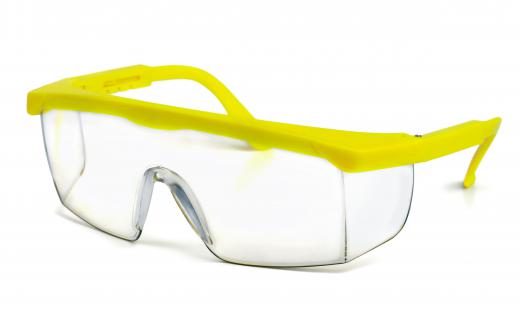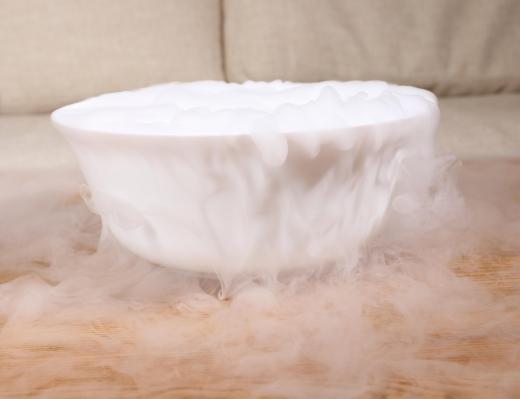How can You Make Dry Ice?
In order to make dry ice, the manufacturer pressurizes carbon dioxide gas and refrigerates it so that liquid carbon dioxide is formed. The liquid is left to expand in an atmospheric chamber. As the carbon dioxide gas changes to a liquid, the temperature drops.
This drop in temperature causes part of the gas to freeze. As a result, carbon dioxide that has the appearance of snow and vapor is created. The carbon dioxide that looks like snow is hydraulically pressed into blocks and pellets of dry ice.

To make dry ice at home, a person needs to buy a CO2 or carbon dioxide tank. Such tanks are used for aquariums, diving, and paintball guns. Purchase the smallest tank for home use. After buying the tank, gather the rest of the materials. Heavy gloves, goggles, an ice bag, and a thick jar are other items needed to make dry ice.
Put on the safety goggles and gloves before attempting to make dry ice. Use the ice bag to cover the nozzle of the tank. Keep a tight grip on the bag, making sure that the bag adheres to the nozzle.

Next, turn the tank's valve in order to release the carbon dioxide. Keep the valve open for about five to 20 seconds. Next, turn off the valve before taking the bag off the valve. After removing the bag, place the dry ice into the jar. Do not put a lid on the jar, as the carbon dioxide can cause it to shatter.
Dry ice is used to keep materials colder for a longer period of time than those preserved with traditional or wet ice. This is because dry ice has a temperature of -109 degrees Fahrenheit (-78.5 degrees Celsius). Instead of melting, dry ice changes into a carbon dioxide gas, thereby eliminating the need to remove any residual liquids.

People use dry ice for a variety of needs including, keeping ice cream cool during car trips and packing freshly caught fish so they remain cold during the ride home. It is also used on airlines to keep perishable food cold. Blood banks may use dry ice to ship blood to hospitals as well. Dry ice is even used to make fog at concerts and other theatrical events.

When handling dry ice, it's important that the user wears thick gloves in order to protect the skin. If the user touches the dry ice without the protection of gloves, the skin can be severely damaged by the frigid temperature of the ice. Users should never try to taste or swallow dry ice as the material can damage the internal body as well. As a person works with dry ice, he should make sure that the room is properly ventilated since carbon dioxide is toxic and concentrates in enclosed and low-lying areas.
Dry ice should be kept in an insulated box or container. If the container has thick insulation, it will keep the dry ice from breaking down or sublimating too quickly. It should never be stored in a completely airtight container because the dry ice can cause the container to expand or even explode.
Never store dry ice in a freezer as well. The extremely cold temperatures of the material will cause the thermostat to turn off the freezer. As a result, the dry ice won't last, since it will be used to keep items frozen within the freezer.
Sometimes a user may accidentally touch dry ice and suffer a burn. When this occurs, he should see a doctor if the skin begins to blister or peel. If the burn is merely red, it will eventually heal just as any other minor burn. An antibiotic cream should be applied to the burn in order to ward off infection.
AS FEATURED ON:
AS FEATURED ON:














Discussion Comments
Wow, this was an interesting report. I never knew dry ice was that cold, that it could burn you.
@Denha, while I myself have of course never tried it, I once knew someone who knew how to make a dry ice bomb. Mostly, though, I just have known people who used it to cool foods.
As for liquid nitrogen, that always makes me think of the movie "Real Genius". In that, a goofy physics major freezes liquid nitrogen into coin shapes to put into soda machines instead of money.
While I know it is a different chemical, thinking about how to make dry ice makes me think of liquid nitrogen, which many of my physics and chemistry major friends loved to do in college. Like dry ice, it can keep things very cold, but also sort of fragile and things frozen by liquid nitrogen can melt or break very easily. Liquid nitrogen is also fun to use for things like making ice cream and other tasty "expeeriments", while dry ice has more at-home uses.
Post your comments